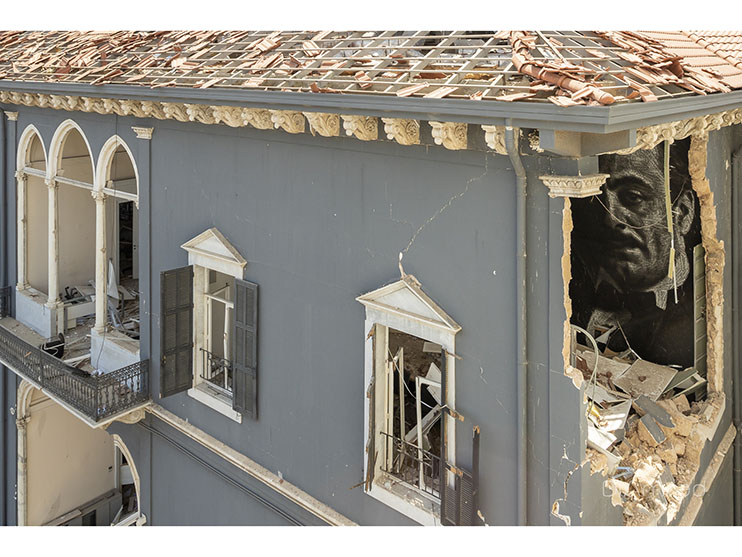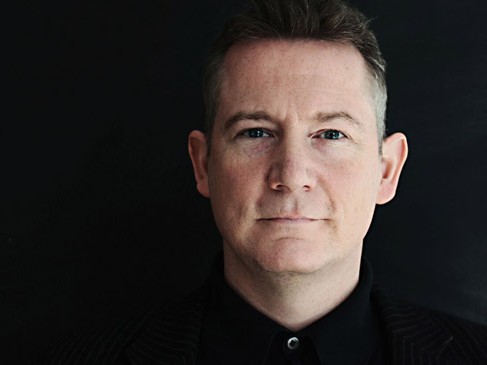Industry Talk - Free Talk
M&C Saatchi Beirut team: Future generations should not live without a past
November 18, 2020
.jpg) Advertisement
AdvertisementOn August 4, the fourth largest explosion in history rocked Beirut, destroying half the city and rendering 300,000 people homeless. The shock wave ravaged the historic Quantum House, which houses M&C Saatchi and stands less than 1km from the blast site. In a flash of a second, ceilings collapsed, windows exploded, doors came unhinged and lives came apart.
Quantum House, also known as Villa Mokbel, is a treasured heritage site in upscale Achrafieh. It has witnessed over a century of history, including the French mandate, two world wars and the Lebanese Civil War. Its unique blend of Ottoman and Italian influences gives it an exceptional architectural edge.
Tall, ornate doors welcome visitors into the elegant three-arched hall (liwan), where long ballroom stairs flanked by marble pillars connect the first floor to the upper level. Intricate stucco and gold-leafed ornamentation spreads across the high ceilings in gorgeous detail. The breathtaking setting brings to mind the glamour days of the silver screen. In fact, the interior provided the backdrop for Nino Zanchin’s 1969 film, Appointment in Beirut.
The three-story mansion has assumed manifold forms since its foundation in the late 19th century. It first served as a family residence for Alexandre Nicolas Sursock, an aristocrat who hails from one of the important “Seven Families” of Beirut. The palace enjoyed a high standing among notable thinkers, artists, politicians and other influential figures who regularly graced its grand halls. The estate was briefly appropriated by the distinguished Menassa family then by Gebran Mokbel during the 1940s. It was transformed into a public school until the end of 1990s and housed Pigier University, the oldest business school in Lebanon, for a few years afterward.
By the time Saatchi discovered the house in 2008, the battle scars of the Lebanese Civil War (1975-1990) were still visible. Three years of meticulous reconstruction efforts brought the palace back to its full splendor. As per the firm’s motto of “propagating positive social change,” they invested great efforts to preserve the original charm of the villa and safeguard it for future generations.
August 4. 6:00 pm. A typical Tuesday, by all standards. Who could have predicted that a ticking timebomb was only minutes away from detonation? An earth-shattering explosion followed by a second, more powerful one shook the villa by its very foundations. In a cloud of dust and debris, the once-sturdy mansion was crumbling and over 60 employees suddenly found their lives on the line as they scrambled to make it out alive.
Rania Feghaly from Human Resources was propelled by the blast and knocked unconscious amid the wreckage. Drenched in her own blood, she regained consciousness with only one prayer: that her two children would not become orphans. Shermine Hraoui, Saatchi’s Business Development Director, cheated death and was carried out of the building by her colleagues after sustaining life-threatening injuries. Maguy Jamijian was seated at the front desk when her first day as office assistant took a jarring turn. After escaping the rubble of her short-lived workplace, Maguy discovered that her mother was dangerously injured and that they had become homeless.
M&C Saatchi CEO, Eli Khoury, was on the villa’s top floor in a meeting moments before disaster struck. By sheer luck, he had moved out of the conference room right before it was reduced to rubble. Now, all that remains of that room is a wall featuring the portrait of Lebanese poet Khalil Gibran with the quote: “All of our words are but crumbs that fall down from the feast of the mind.” As if to mirror those words, the wood, metal and glass that made up the villa’s structure had been reduced to crumbs. The devastation was so extensive, so heart-shattering that even those with memories of the Lebanese civil war said the recent blast was more traumatic in comparison. Once outside of the mansion, the wide-scale destruction could be seen extending in all directions. “People were screaming, bleeding and dying in front of you,” said Rania. Broken glass carpeted the streets. The city was held hostage to blind fear in the face of an unknown monster. “It was total chaos,” said Shermine.
Physical trauma was accompanied by emotional pain in the wake of the disaster, particularly for those who had grown attached to the heritage house. “When I realized that the scale of the damage, I was in total denial. I wanted to fix the house myself,” said Pamela Bteghriny, Quantum’s Operations Manager. She helped renovate the mansion a decade ago and has since been overseeing its day-to-day operations. “How could I walk away from my own house? How could I leave it without a door?” Rania echoed those thoughts, “Whenever I was in the house, it felt like that was where I belonged.” Shermine said, “We all had an emotional attachment to the villa. We spent so much time there. It was our home.”
In the aftermath of Beirut’s port explosion, Lebanon’s cultural and physical fabric has undergone tremendous destruction. Quantum House has been damaged beyond the capacity of its owners to restore it. In a city where so much has already been lost, the importance of such unique sites cannot be overstated. This stunning edifice is an essential part of Beirut’s heritage and needs all the help that it can get to be brought back to life. It would be a pity to leave such a historic and architectural marvel behind. After all, future generations should not live without a past.























.jpg)










